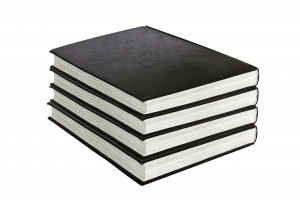Injunctions in New York – A TKO Before The Final Bell?
 Perhaps one of the most misunderstood tools found in New York law is the injunction. Injunctions affect businesses big and small because they often are used in commercial litigation. Injunctions frequently make the news, especially when one is granted in a high profile case. Many times there will be news coverage of two parties just outside a courtroom, one triumphantly telling all who will listen that the end of the world has been averted; the other, down-faced and glum, saying only that he will live to fight another day. More often than not, the second one is right; for the injunction they most often talk about is a preliminary injunction, which is a provisional remedy that only lasts until the underlying case is decided on the merits.
Perhaps one of the most misunderstood tools found in New York law is the injunction. Injunctions affect businesses big and small because they often are used in commercial litigation. Injunctions frequently make the news, especially when one is granted in a high profile case. Many times there will be news coverage of two parties just outside a courtroom, one triumphantly telling all who will listen that the end of the world has been averted; the other, down-faced and glum, saying only that he will live to fight another day. More often than not, the second one is right; for the injunction they most often talk about is a preliminary injunction, which is a provisional remedy that only lasts until the underlying case is decided on the merits.
Most recently, New York State tried to withhold school aid from New York City because the City and the local teacher’s union have not agreed on a teacher evaluation plan. Some parents of children who attend New York City public schools sued to stop the aid from being cut. A New York state judge ordered the State not to cut the education aid; he did so by issuing a preliminary injunction. This doesn’t mean that the parents won, the State lost, and the aid won’t ever be cut. It does mean that the aid will not be cut for now, at least until the court renders a final judgement on the parents’ lawsuit.
There actually are three different types of what commonly are known as injunctions. Though they might seem confusing, they really are straightforward:
– A Permanent Injunction.
This is a final judgement of the court after a trial on the merits of the case, which normally restrains or enjoins one of the parties from taking some action. It is an equitable remedy issued after all the relevant facts have been gathered, all the necessary discovery has been had, and a verdict has been rendered. A court does not have the power to issue a permanent injunction in advance of trial. See Oppenheim v. Thanasoulis, 123 App.Div. 494, 108 N.Y.S. 505 (1st Dept.1908).
– A Preliminary Injunction.
This stops a party from doing something, or, less frequently, orders that he take certain actions, even before the court has decided the case on the merits. This interim step, also known an injunction pendente lite, is a provisional remedy, often done to keep things as they are, to maintain the status quo, until the case itself has been decided. See CPLR 6301.
– A Temporary Restraining Order.
This is an instantaneous freeze issued while the court decides whether to order a preliminary injunction. That is, even before the court decides whether to stop someone from doing something, it stops that person from doing it, at least temporarily. See CPLR 6301.
It is not easy to obtain a preliminary injunction in New York. The party asking for the preliminary injunction has to show that it is likely to win on the merits; it will suffer irreparable injury if the preliminary injunction is not granted; and the equities balance in its favor. In essence, the party has to convince the court that it should issue the preliminary injunction because it is the right thing to do. After all, the decision of whether or not to grant a preliminary injunction is well within the sound discretion of the court, which means the court’s decision is not easily overturned. See Arcamone-Makinano v. Britton Prop., Inc., 83 A.D.3d 623, 624-25 (2nd Dept. 2011).
In order to obtain the preliminary injunction temporarily barring a cut in state education aid to New York City public schools, the parents who brought suit must have convinced the court that they met these requirements. The court obviously was convinced that issuing the preliminary injunction was the right thing to do. According to news reports, the court agreed that the neediest children could be hurt by the financial aid cuts and that the case dealt with those same children’s right to a sound basic education, as guaranteed by the New York State Constitution. It also is important to remember that by issuing the preliminary injunction, the court has maintained the status quo. The New York City public schools are getting the same amount of aid after the preliminary injunction was issued as they were before it was issued; the preliminary injunction merely prevents them from receiving less. That probably does the best job of explaining why the court issued the preliminary injunction: Where the stakes are so high, keep everything the same until a decision can be rendered on the merits.
 New York Business Lawyer Blog
New York Business Lawyer Blog

